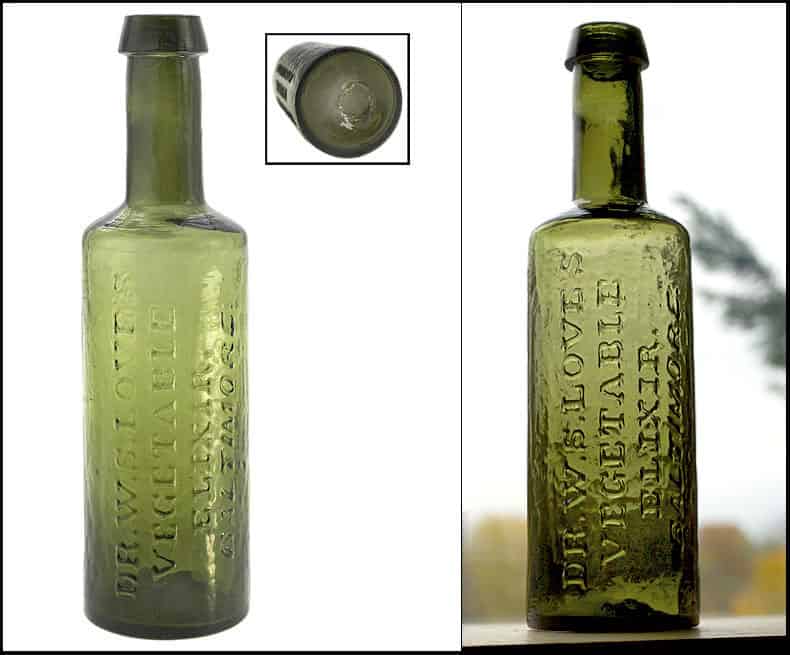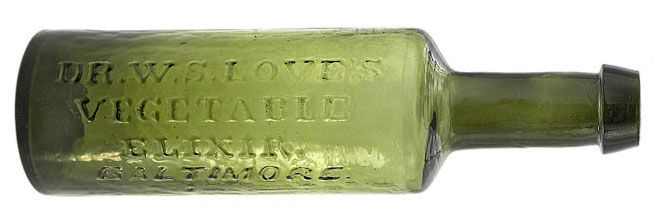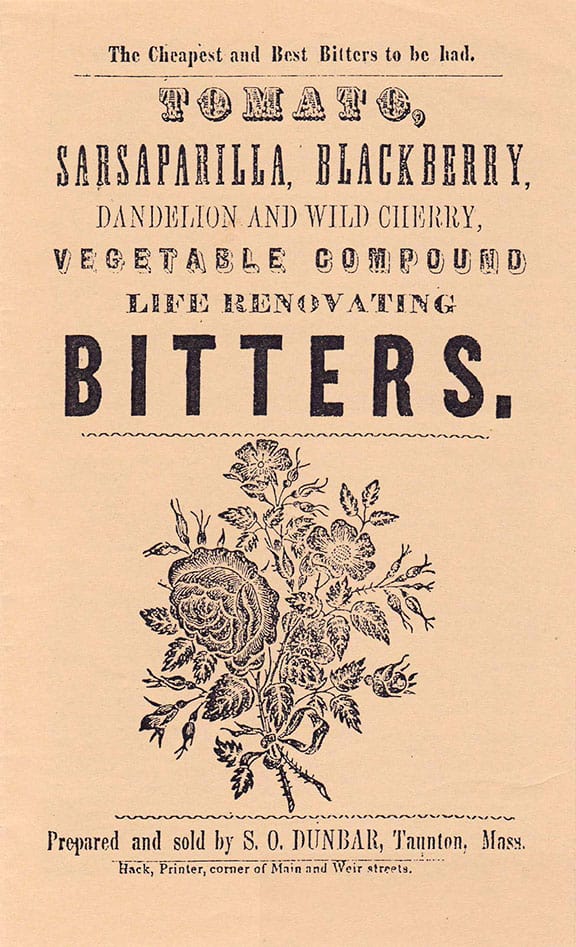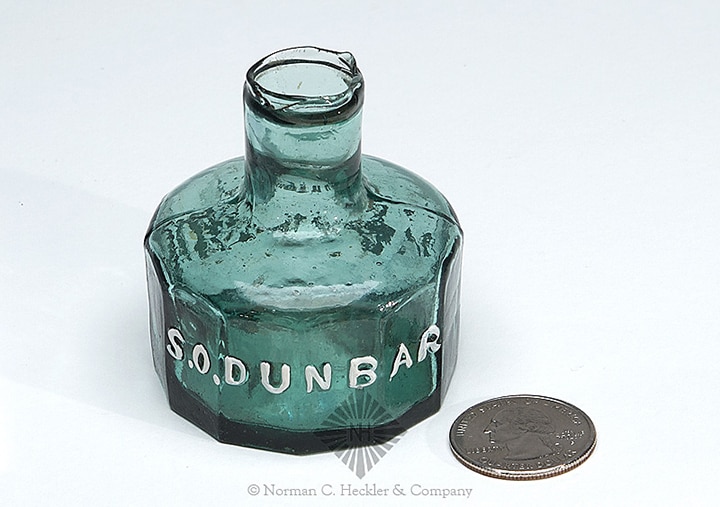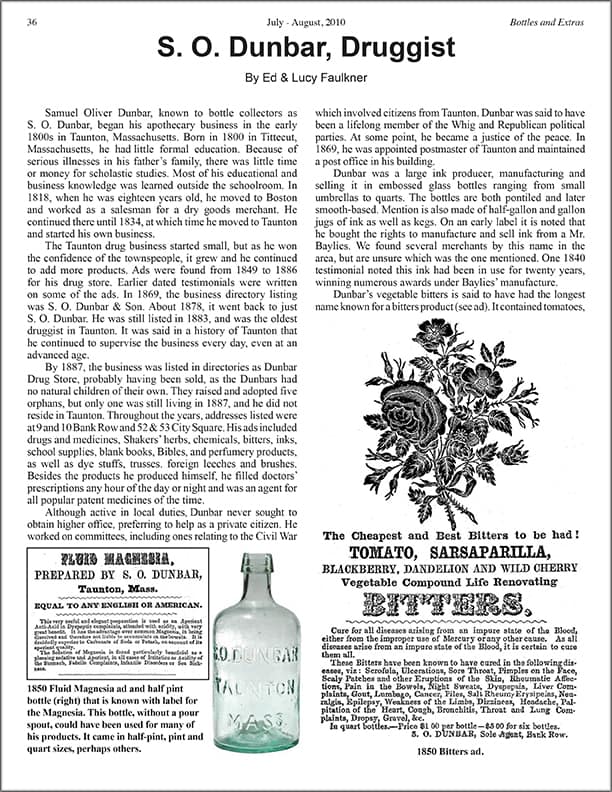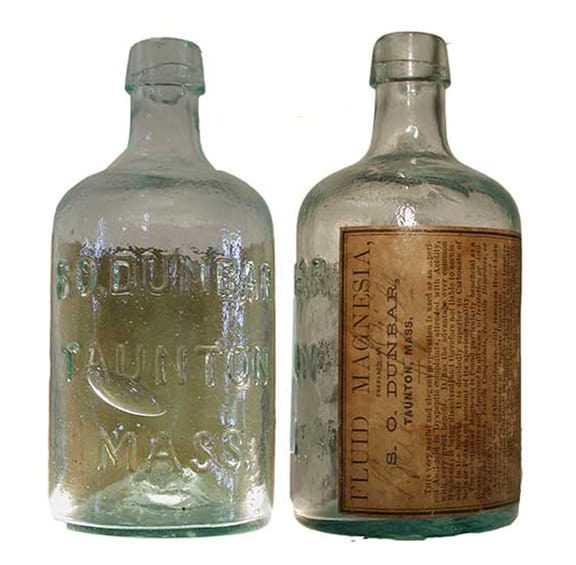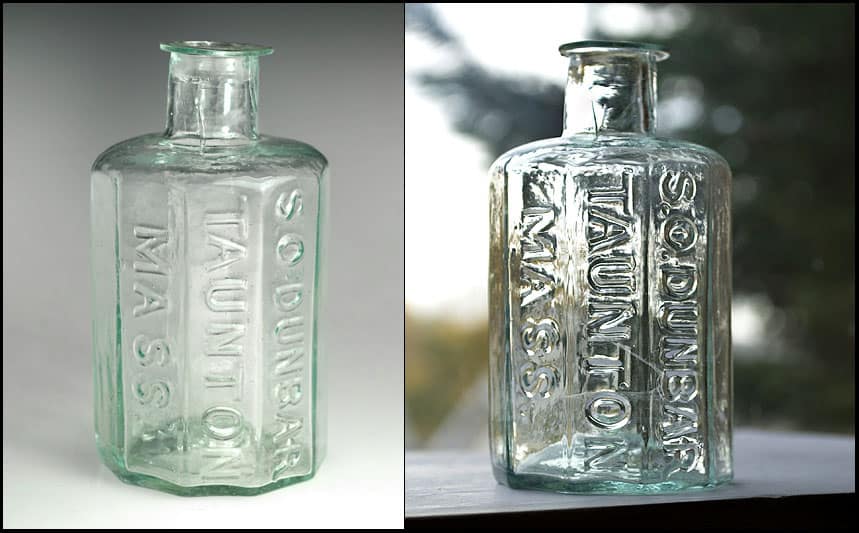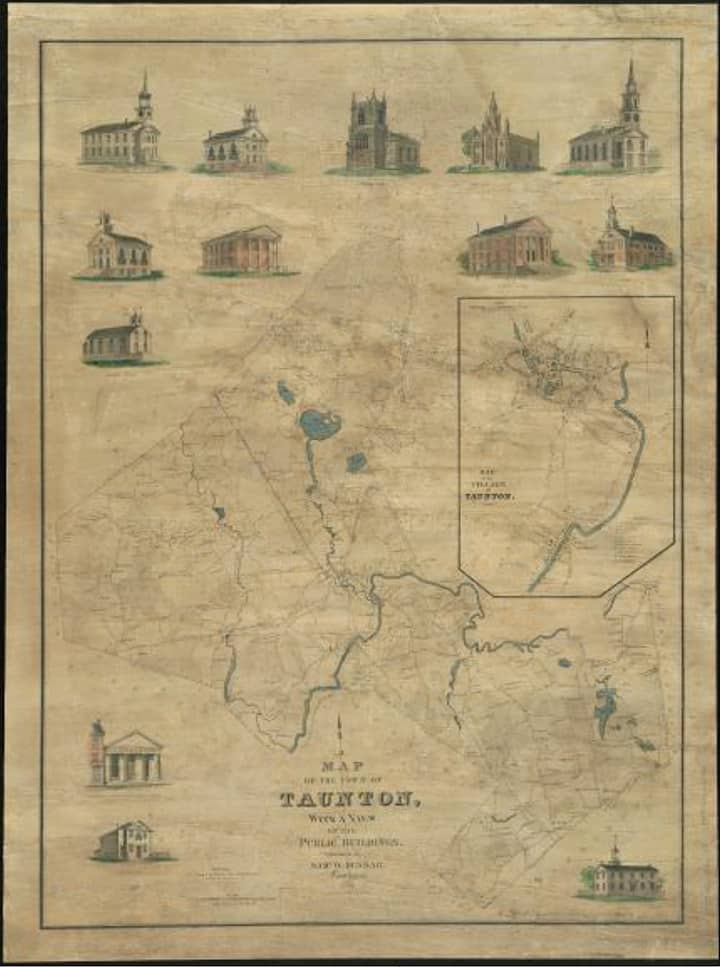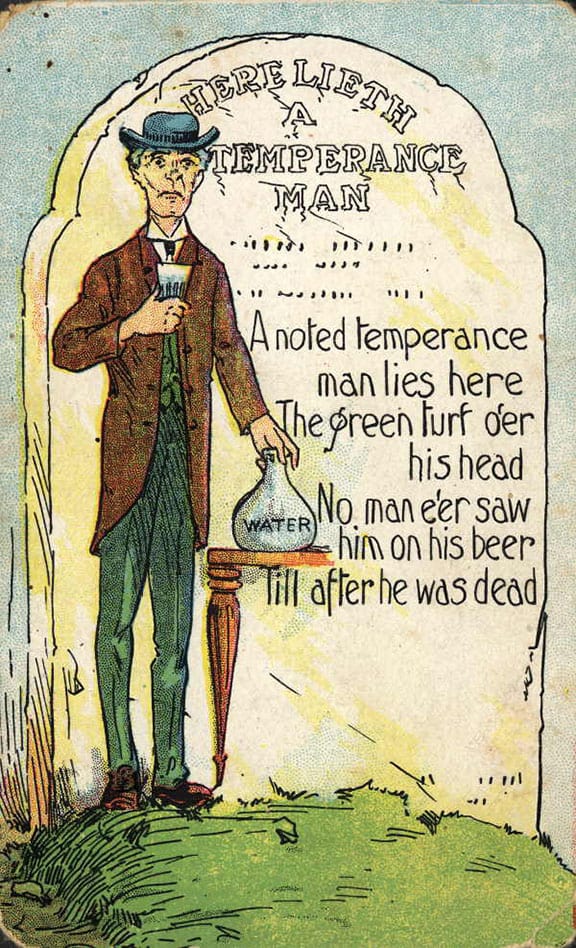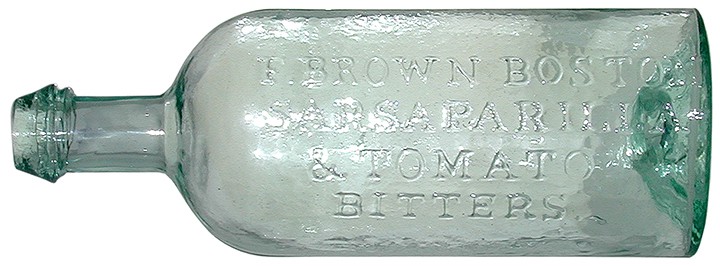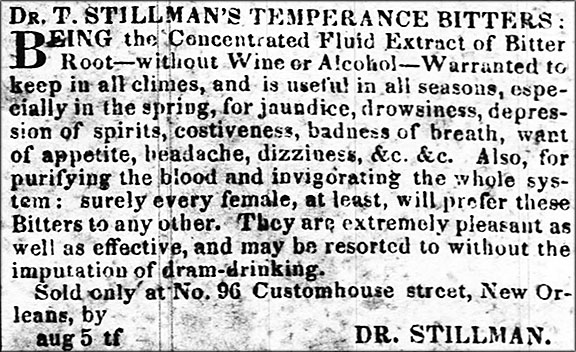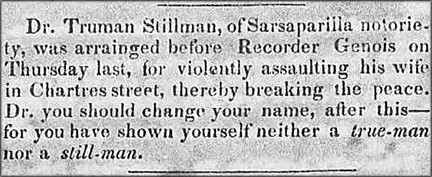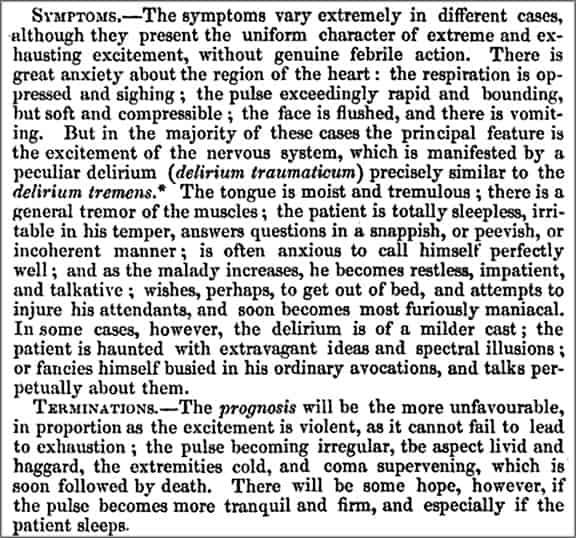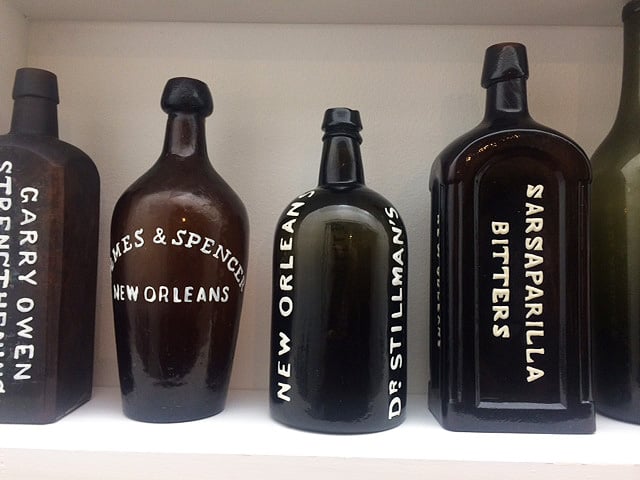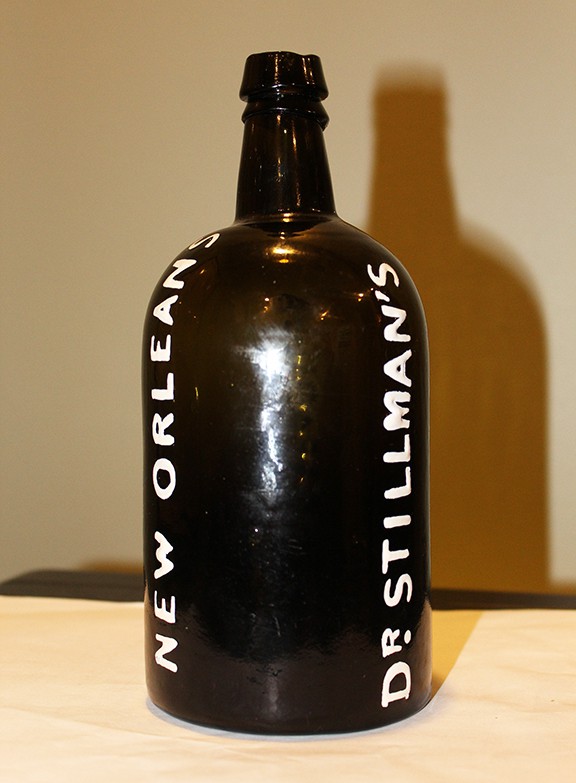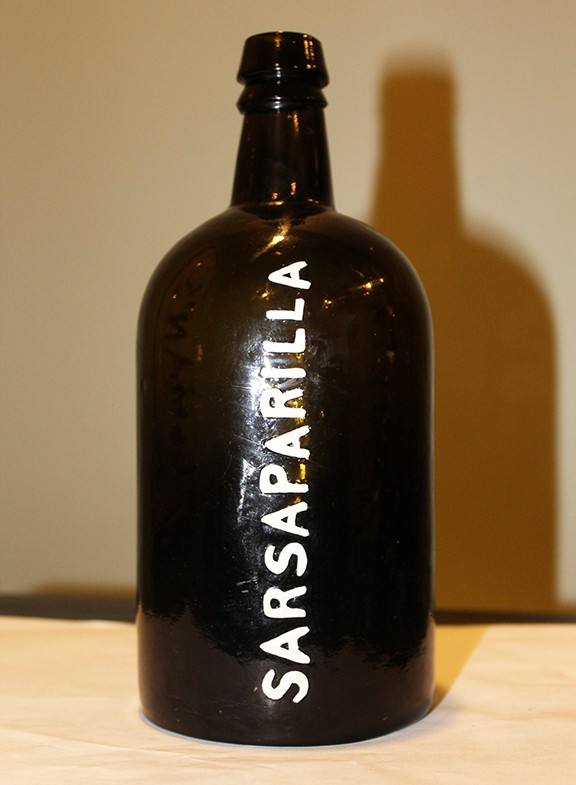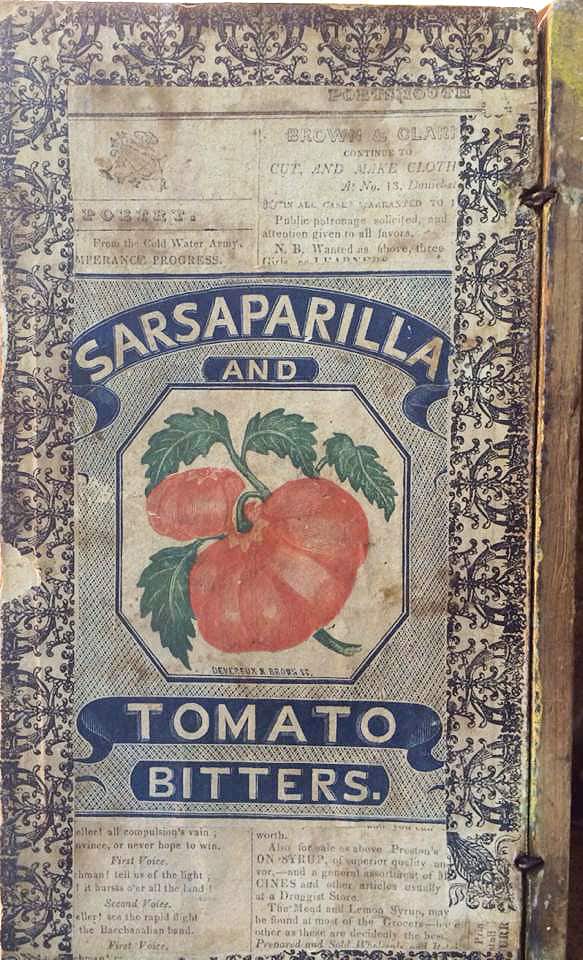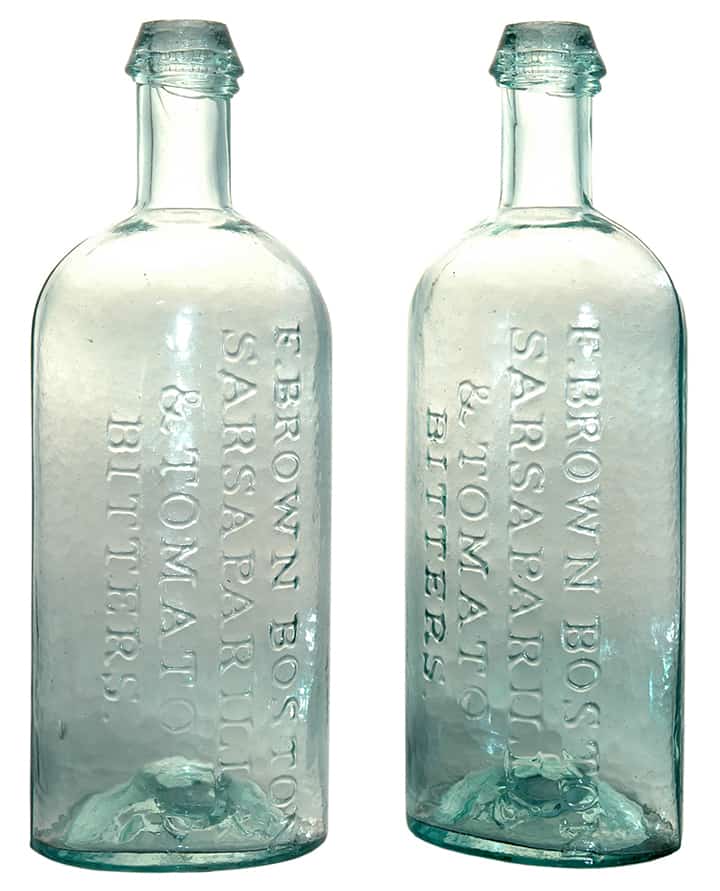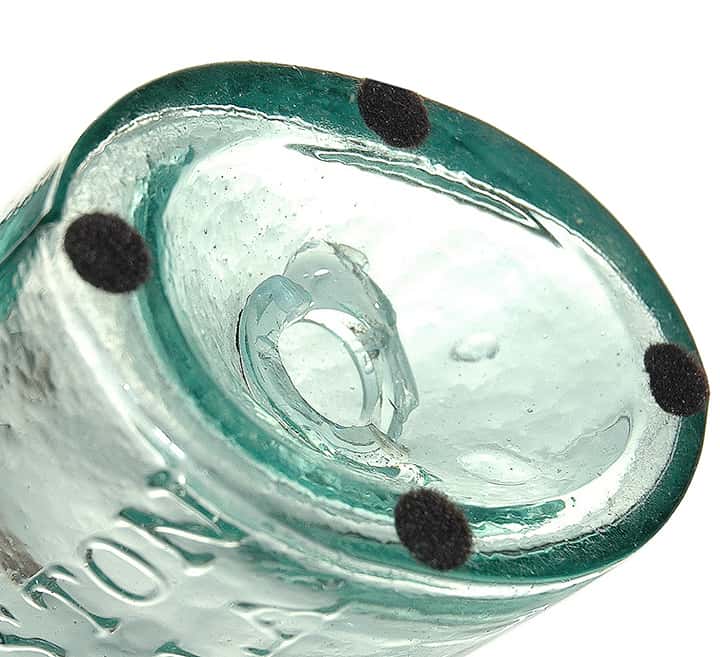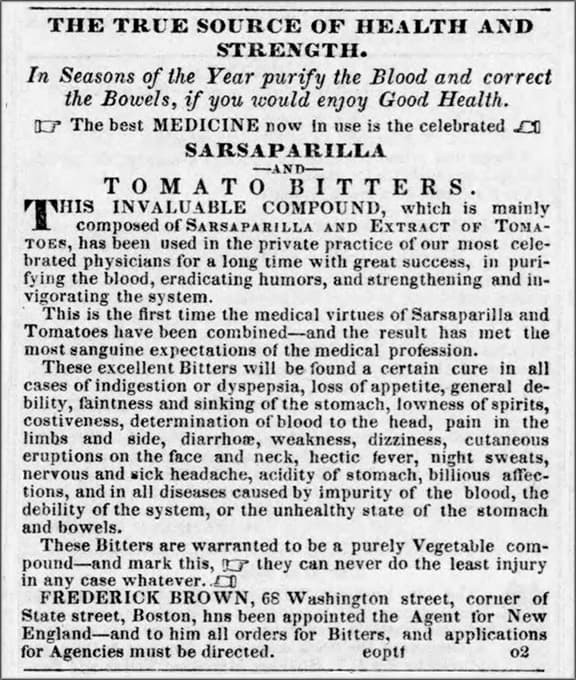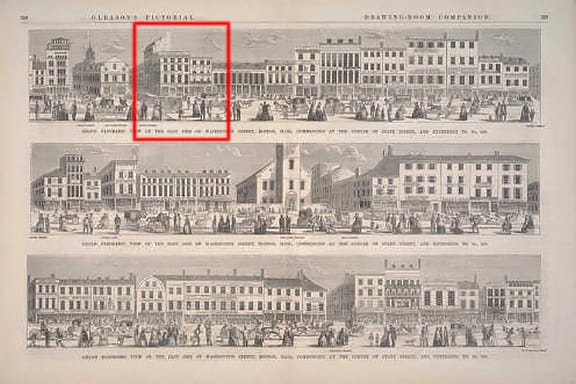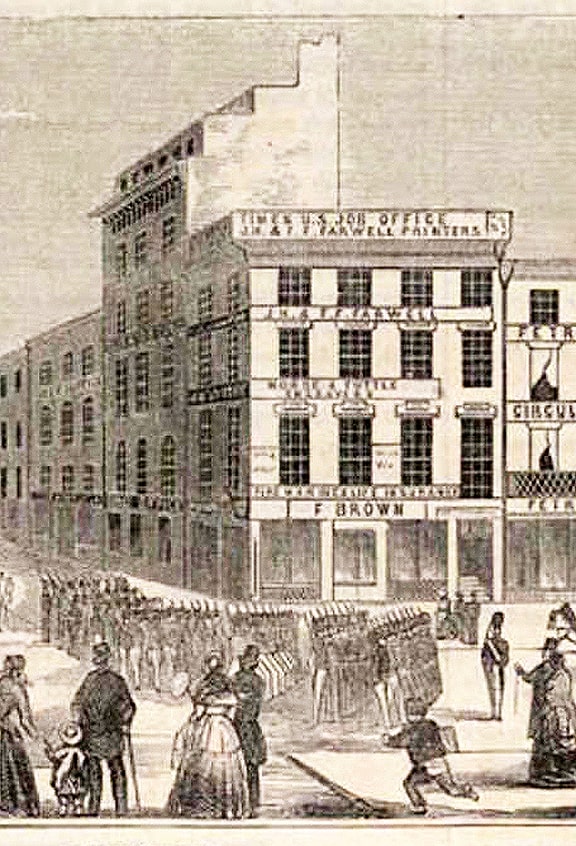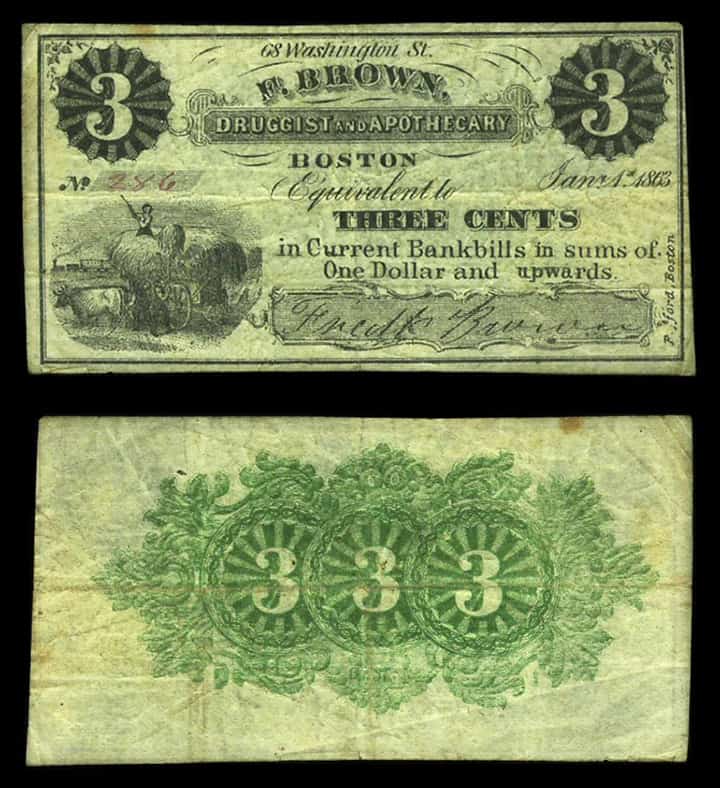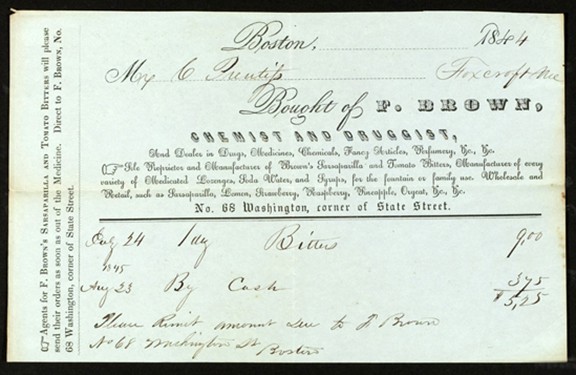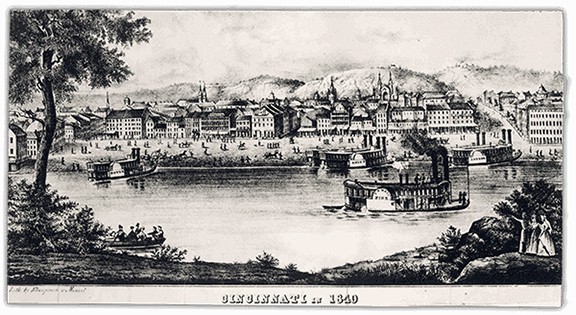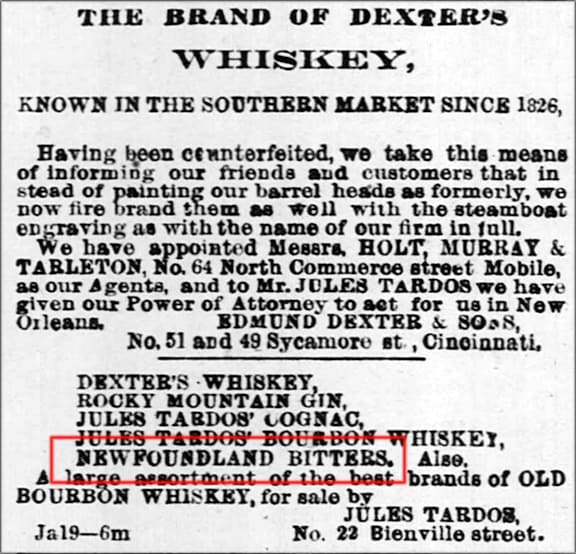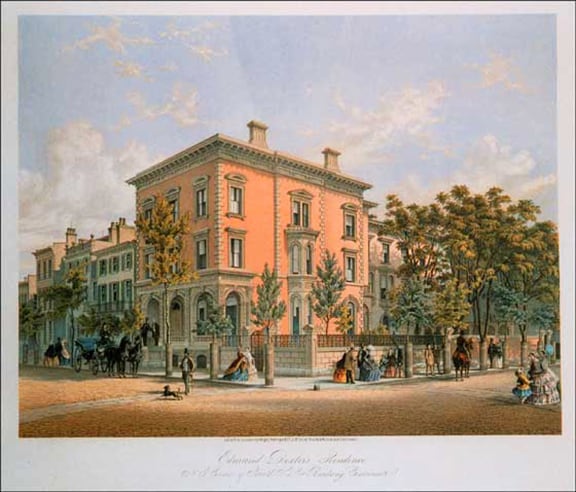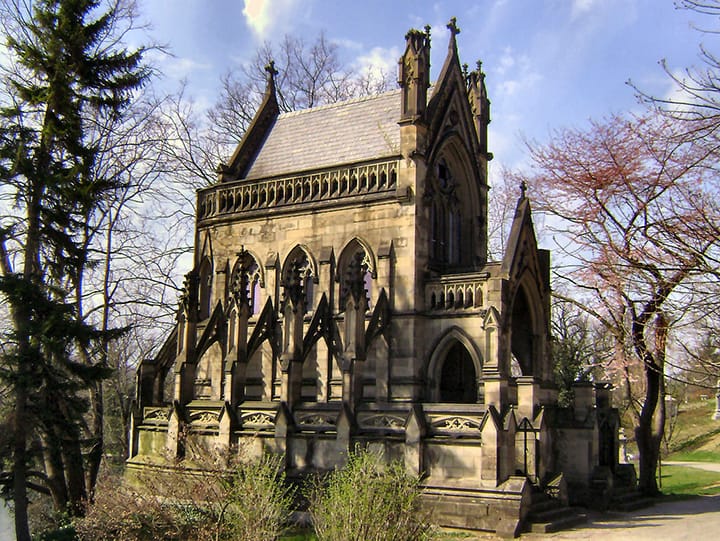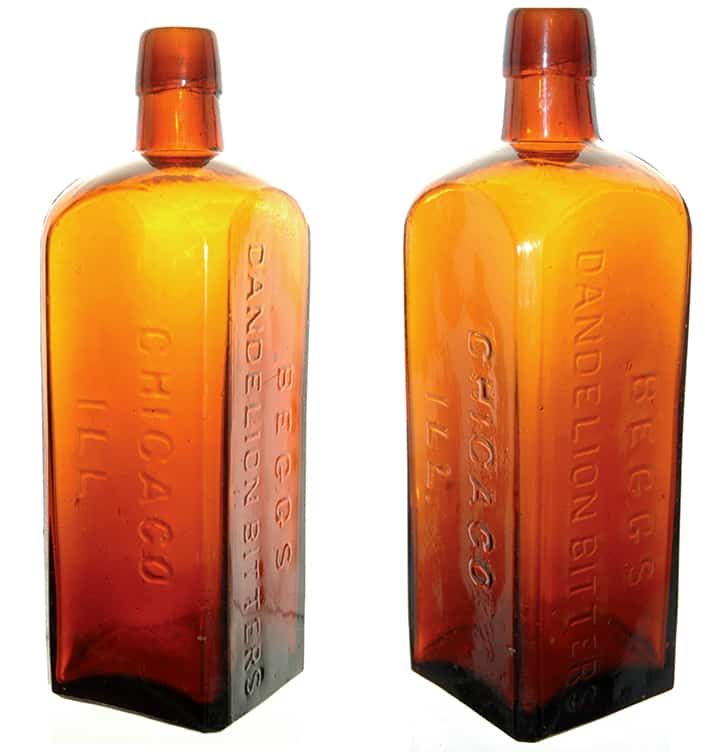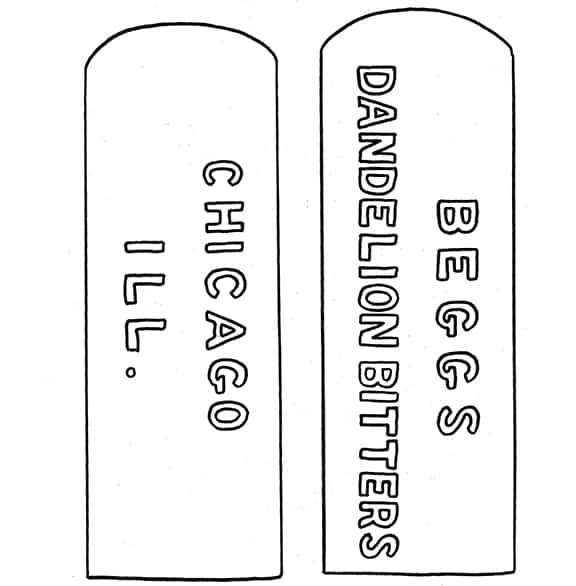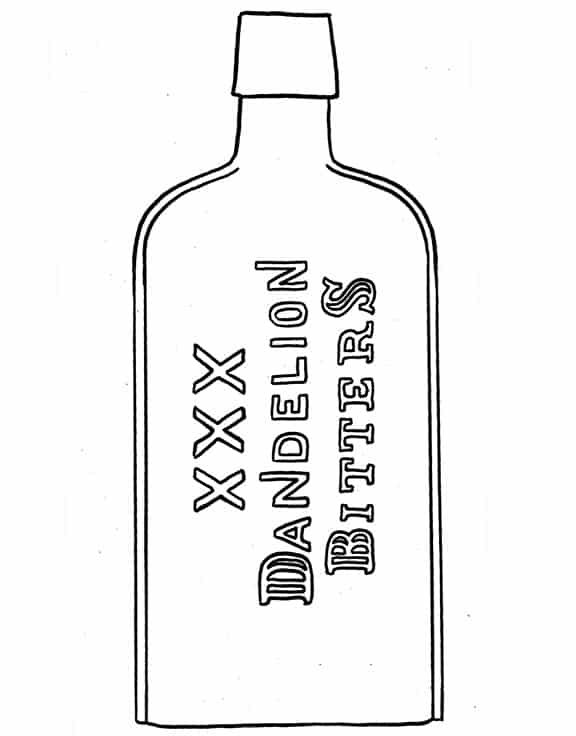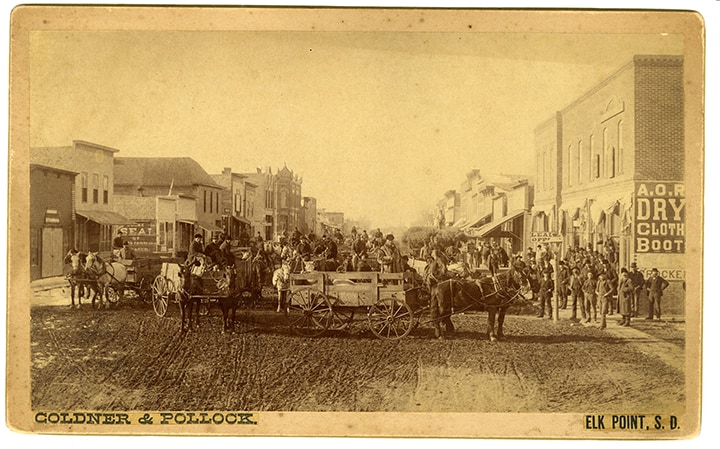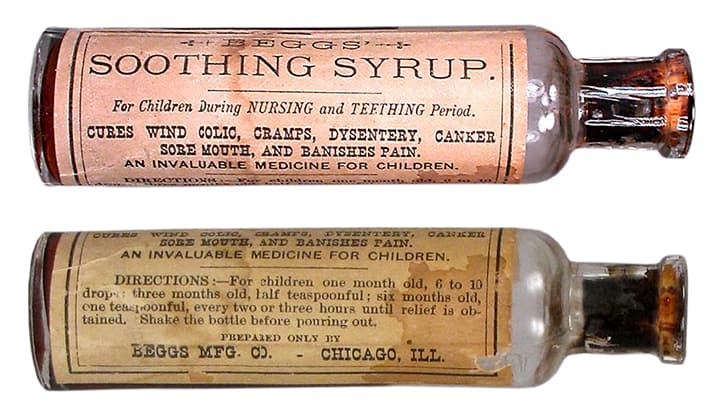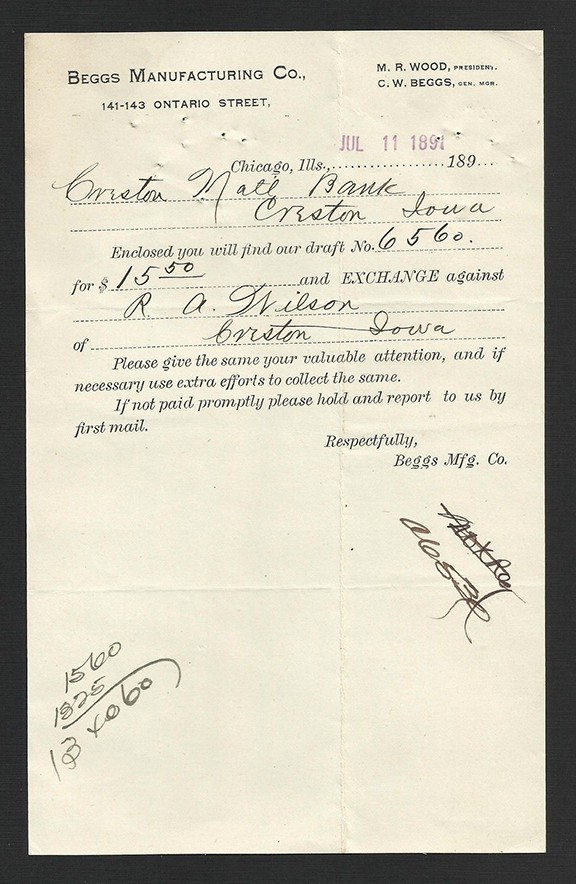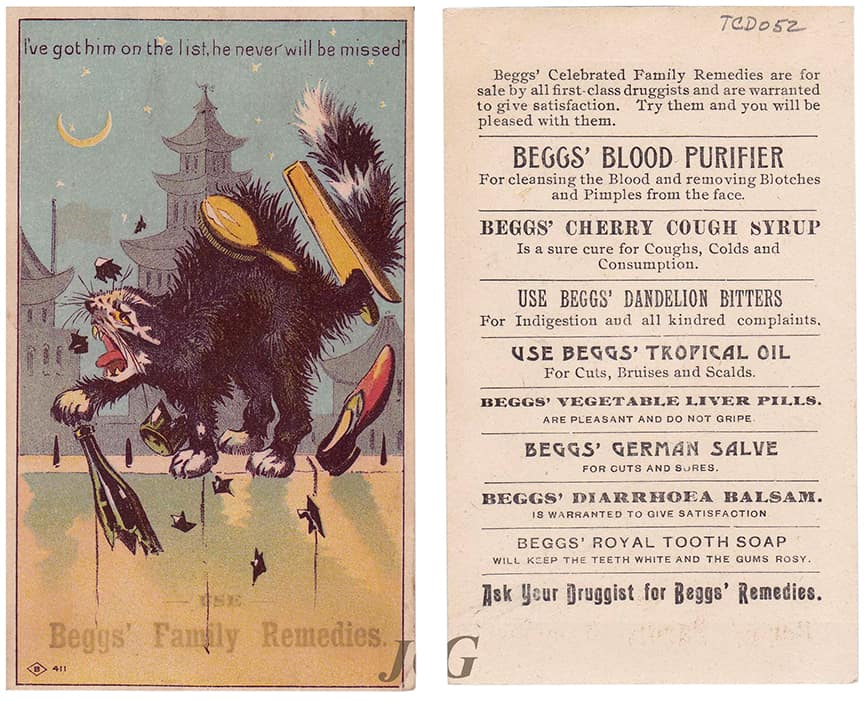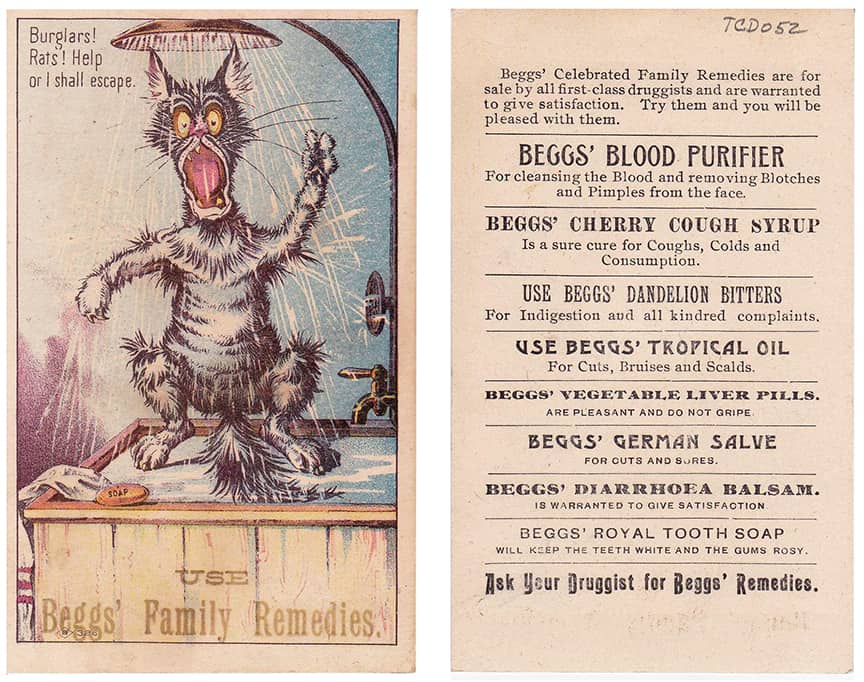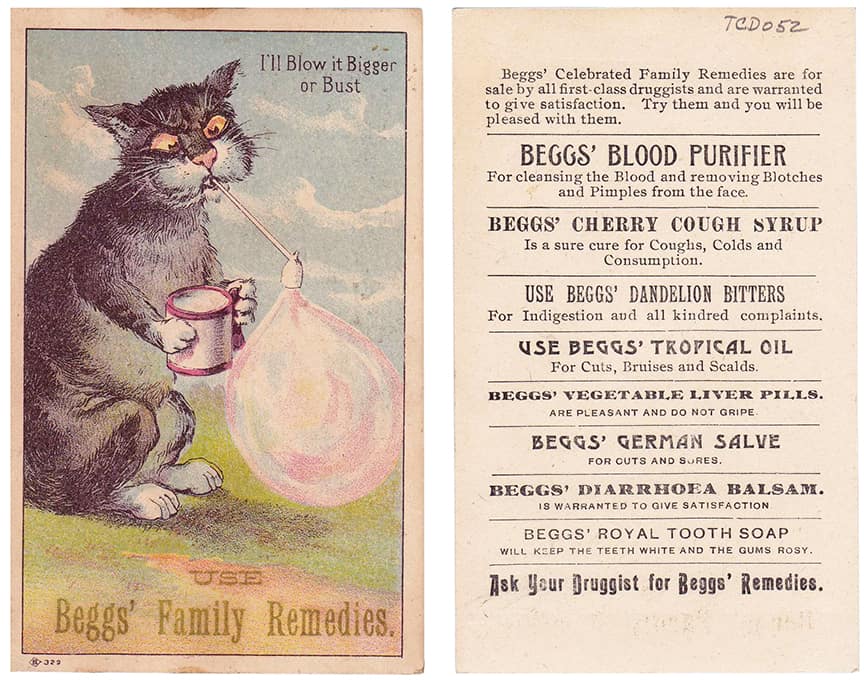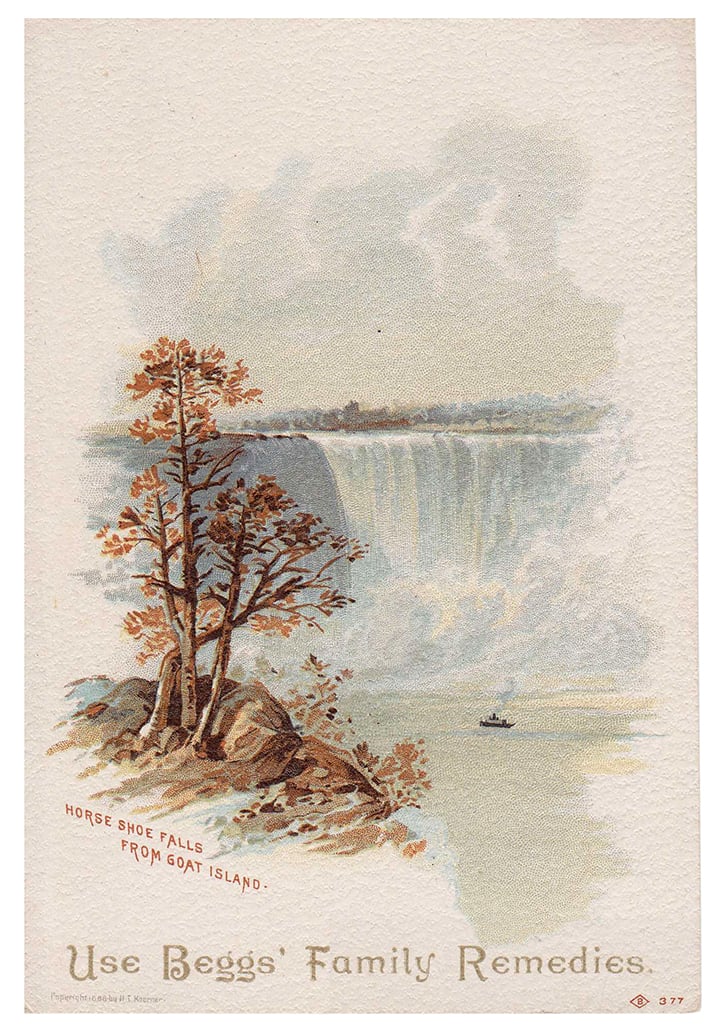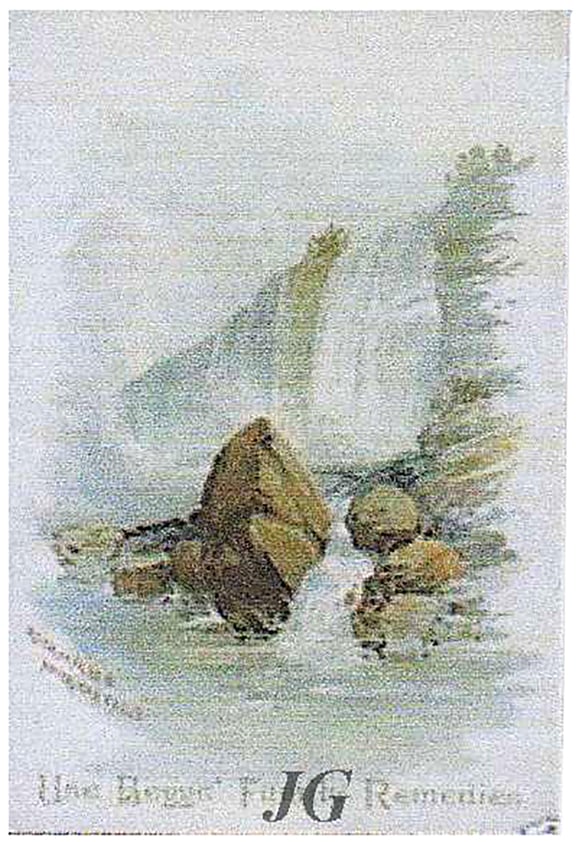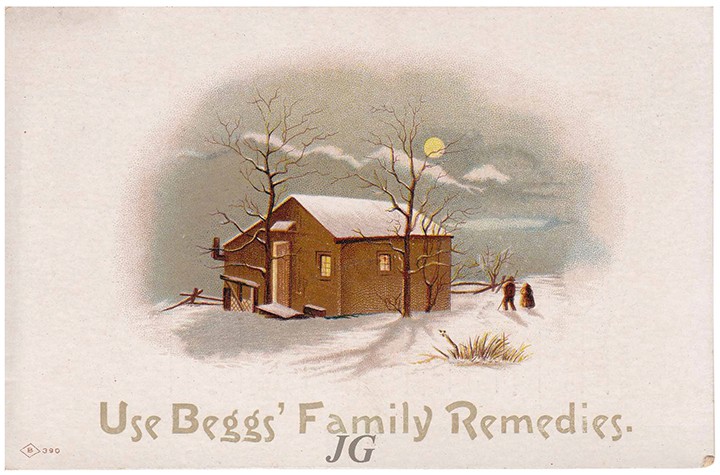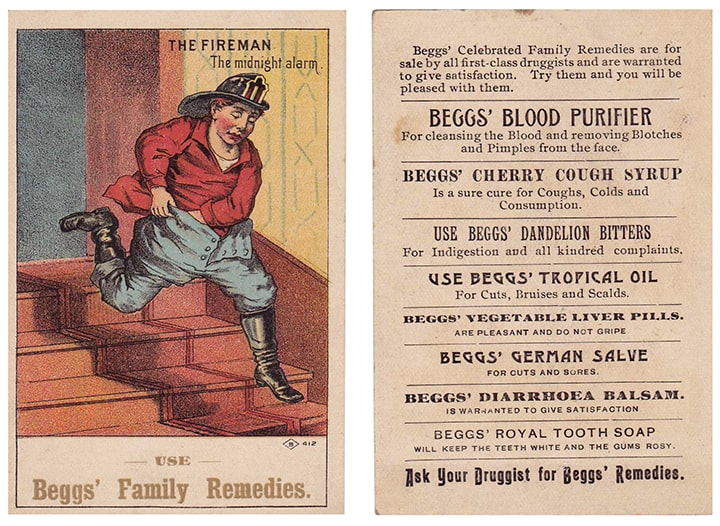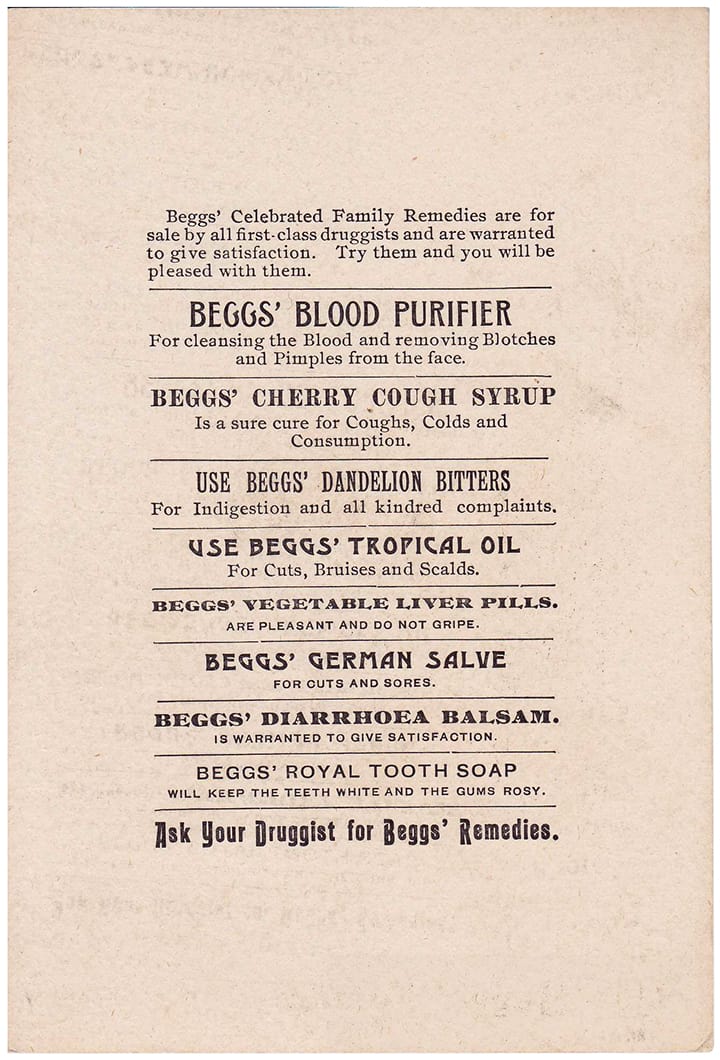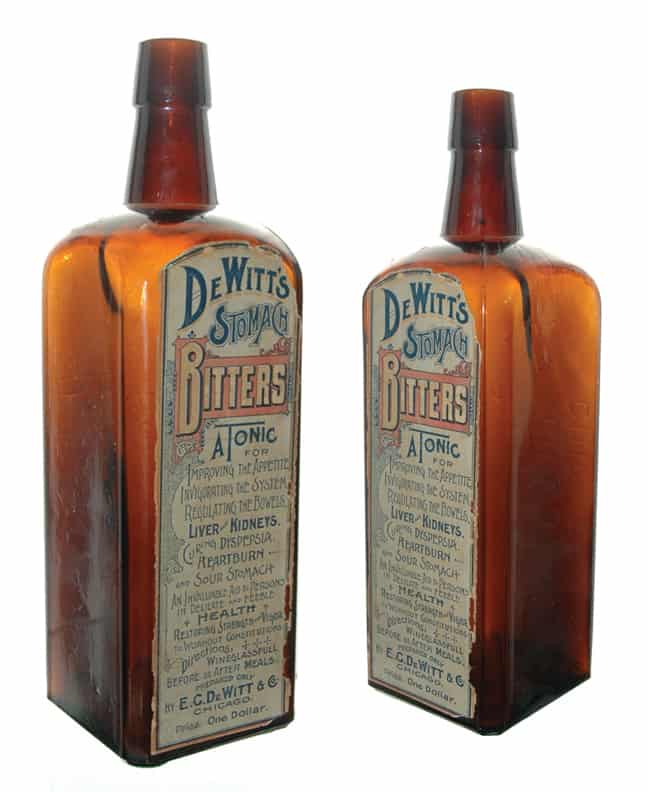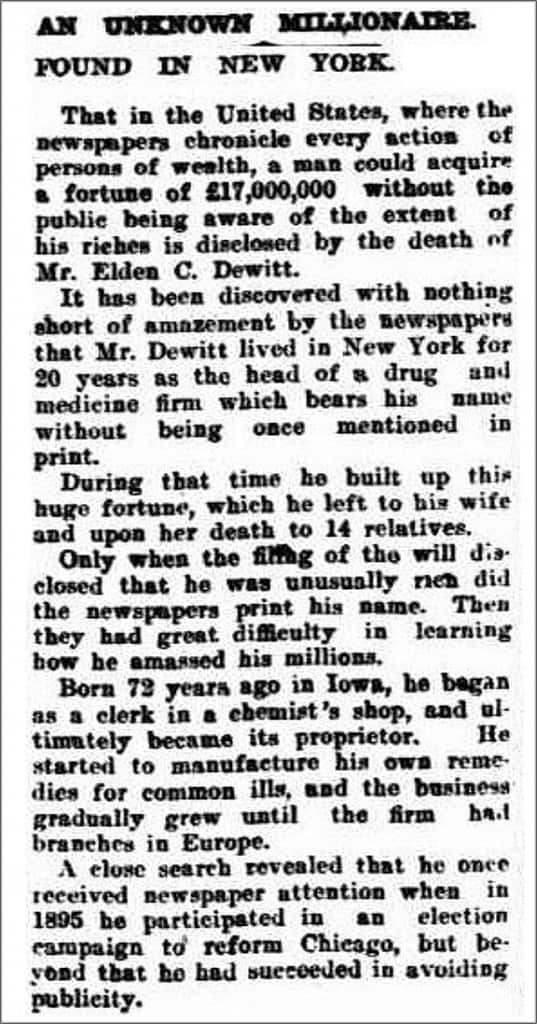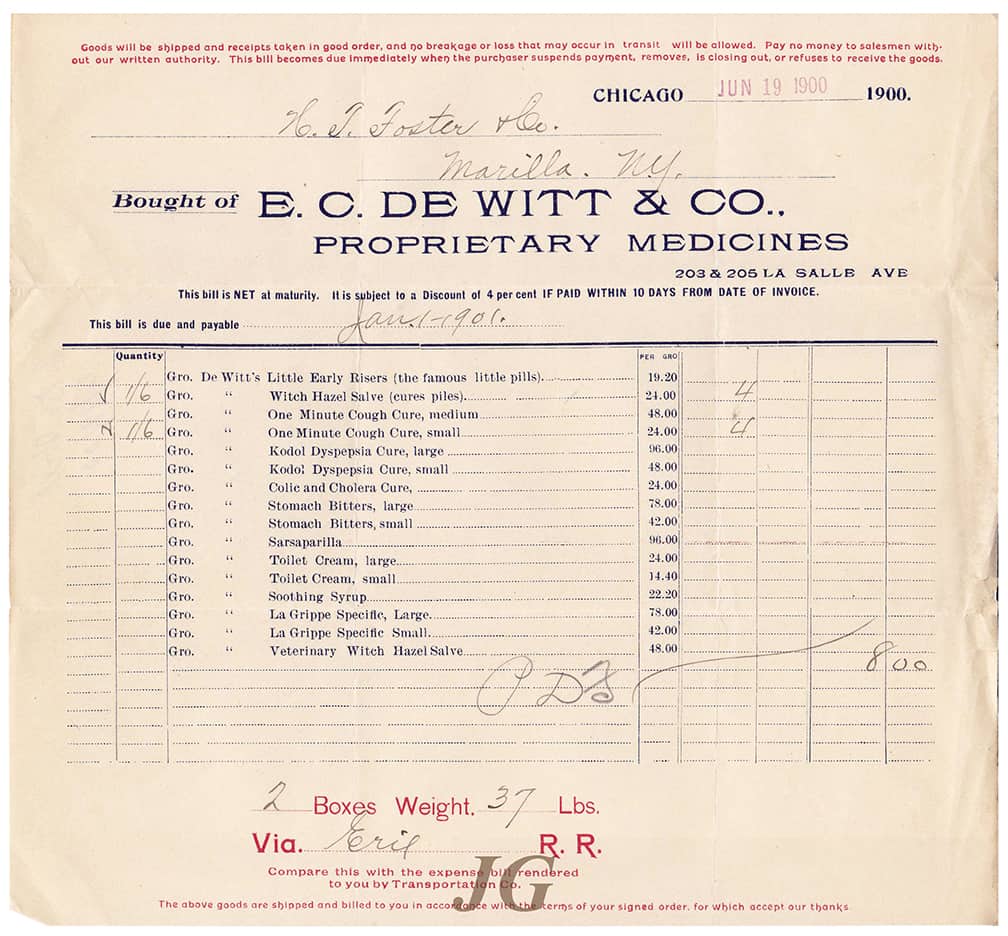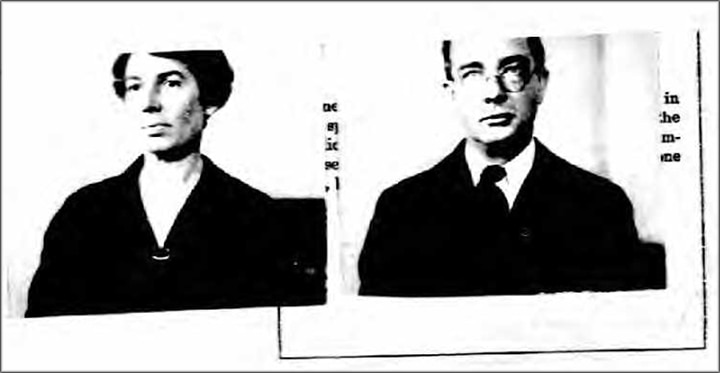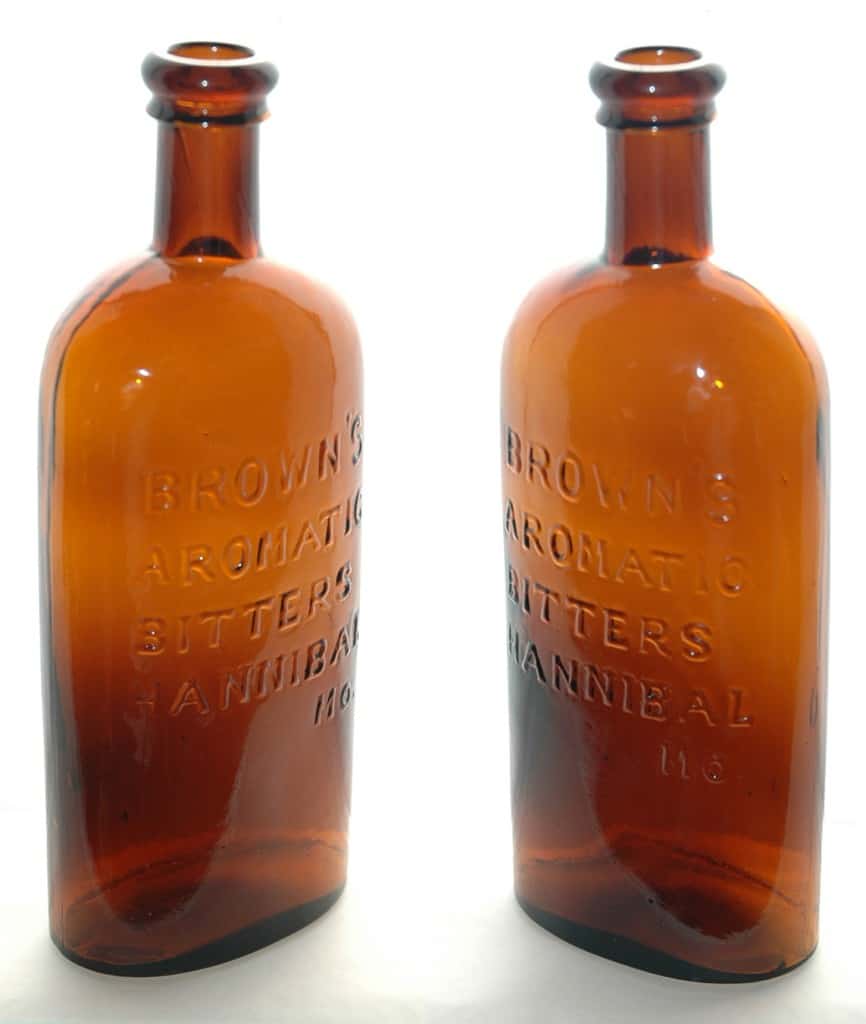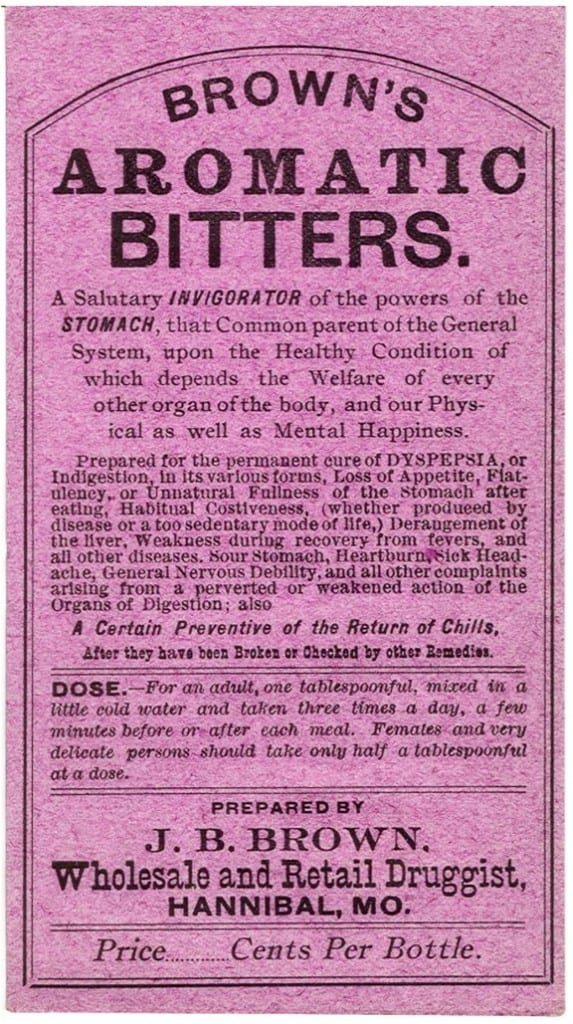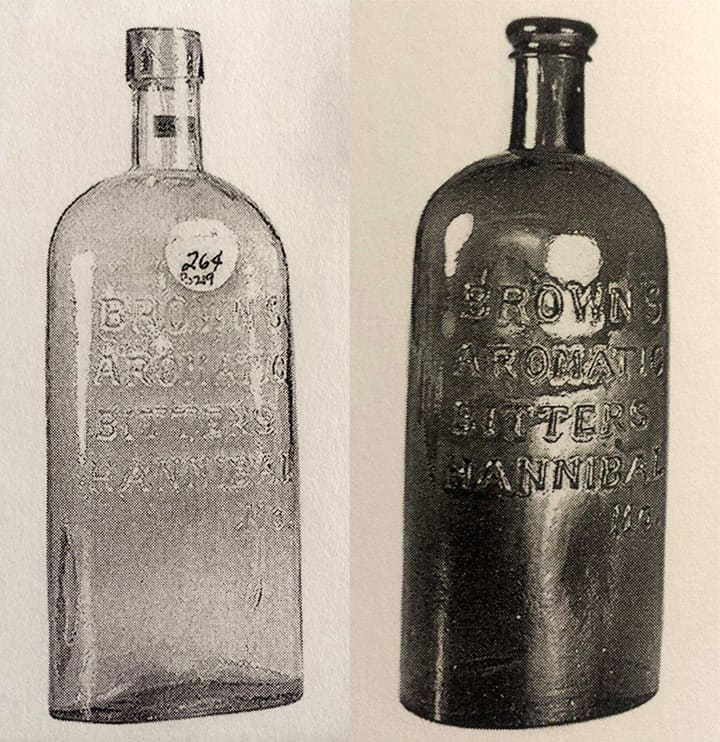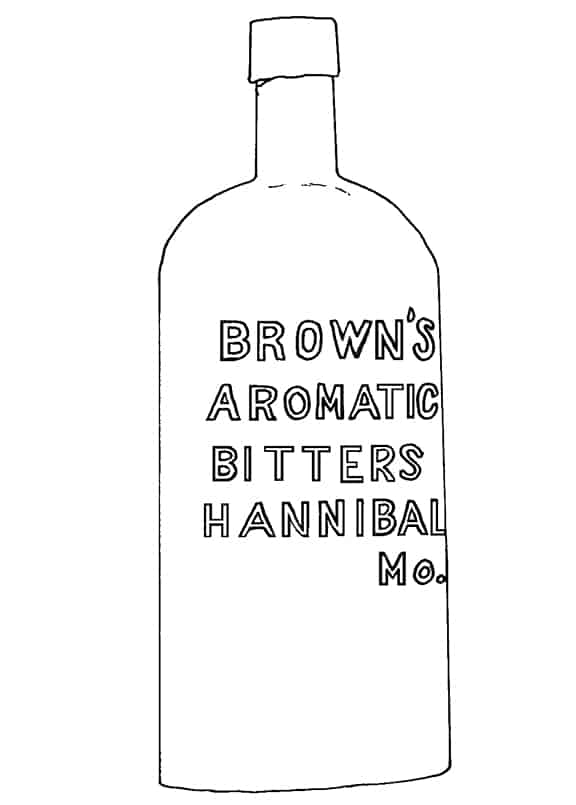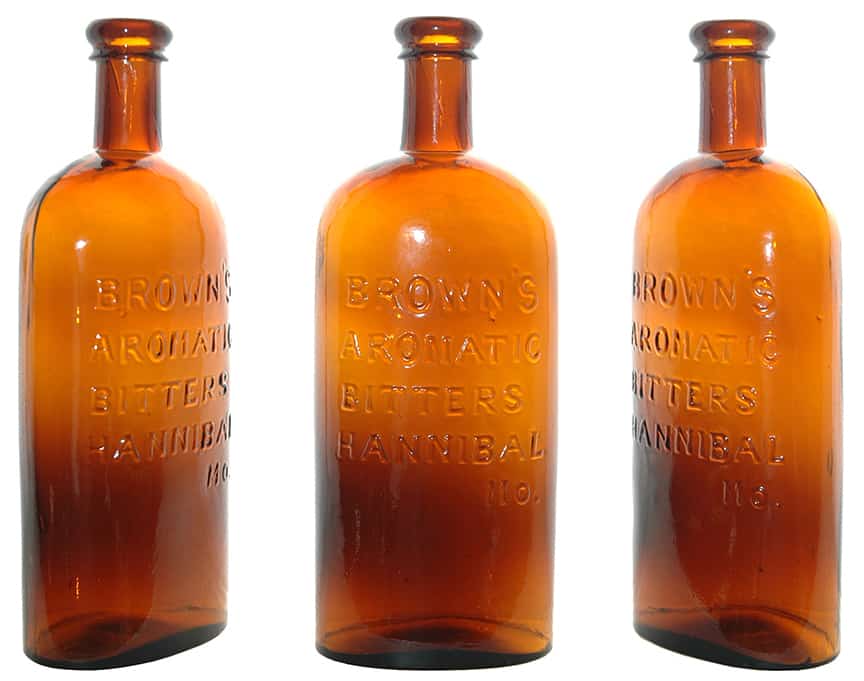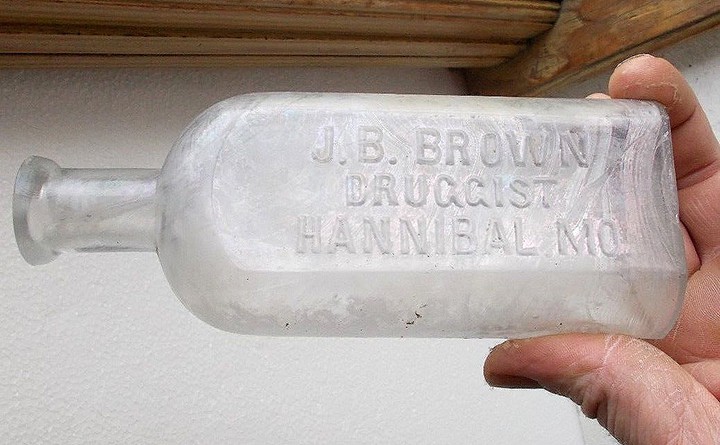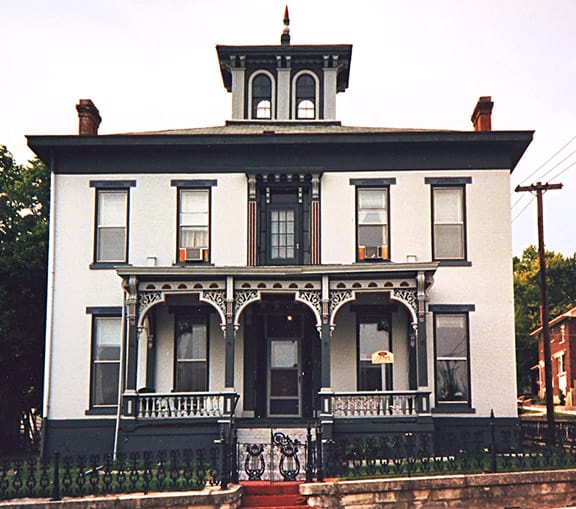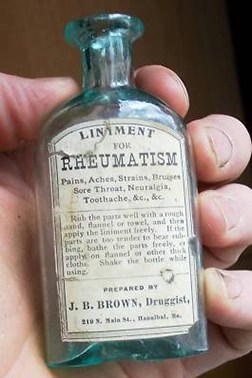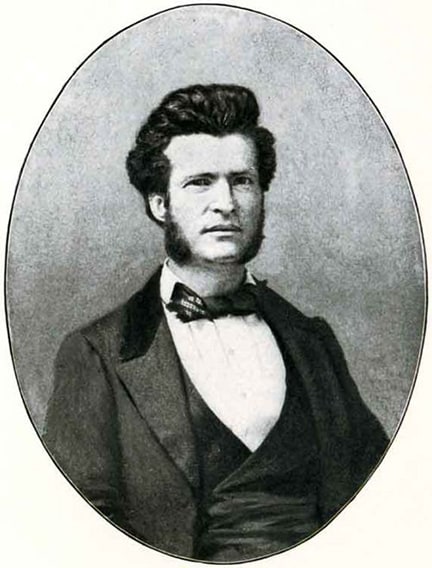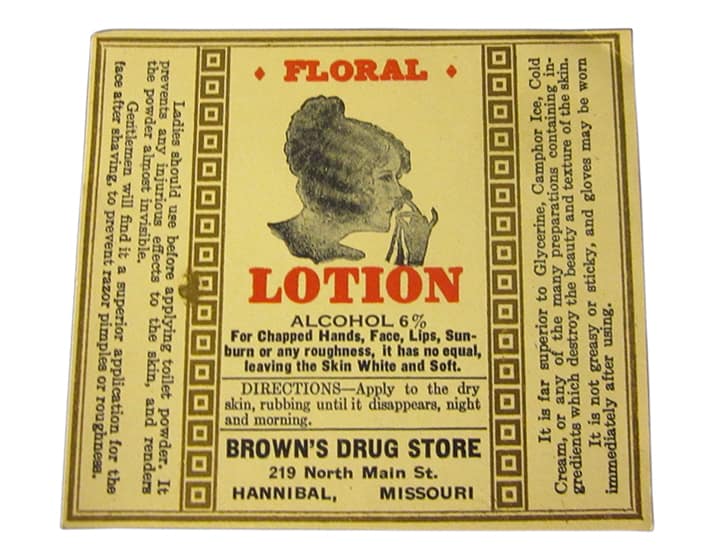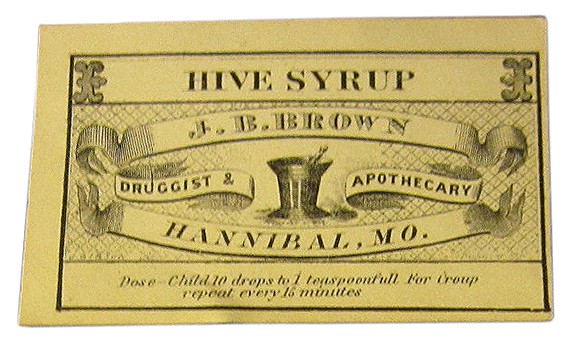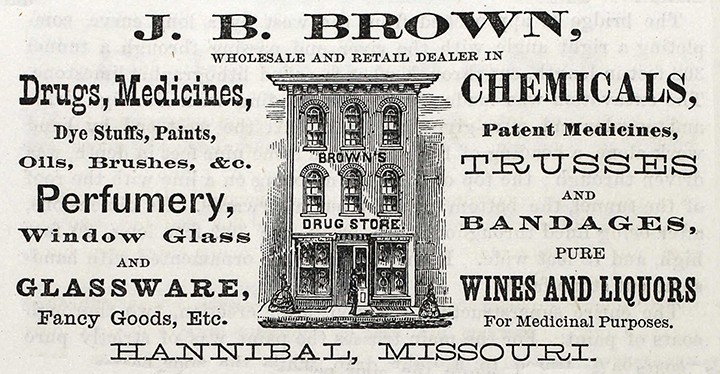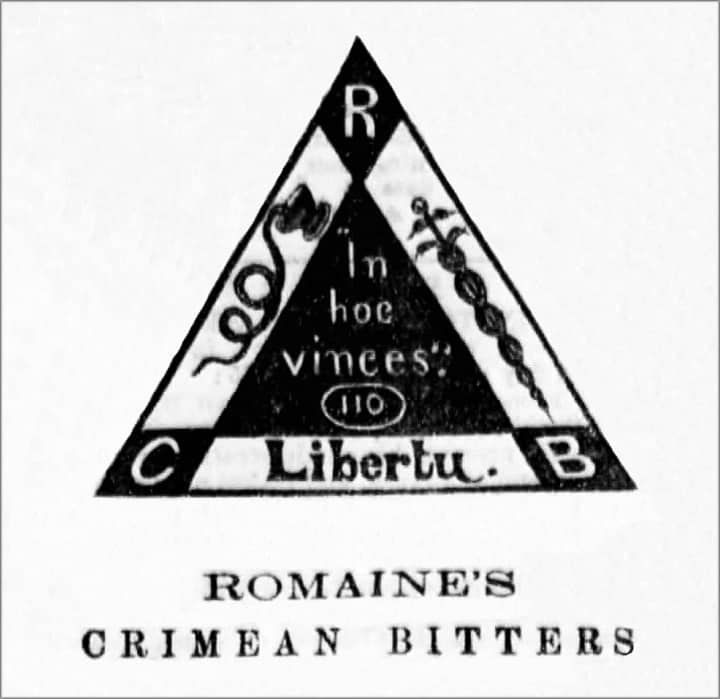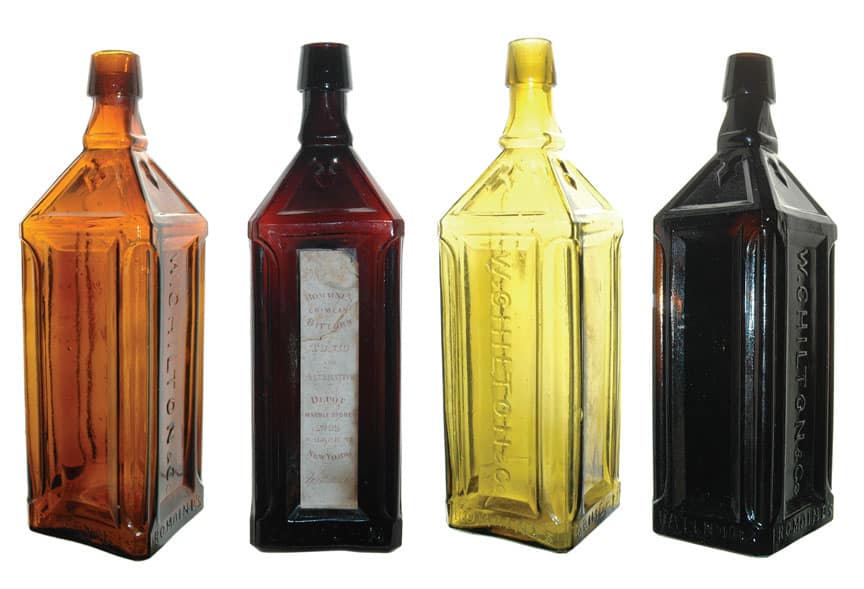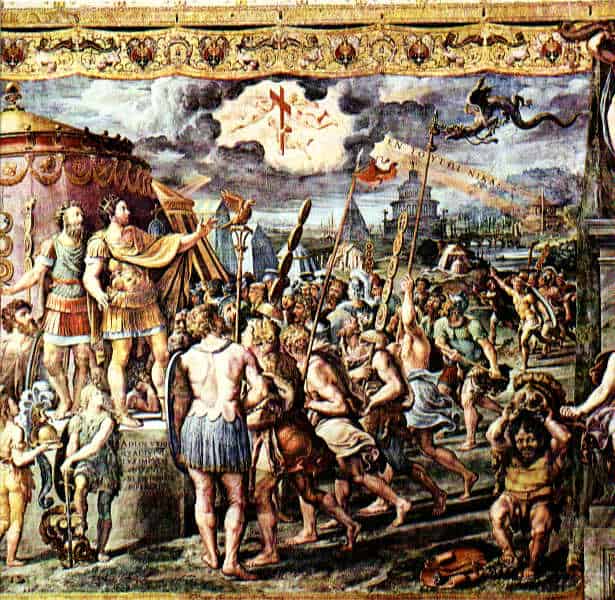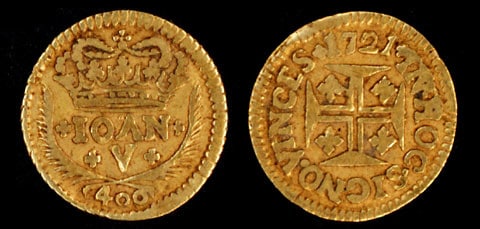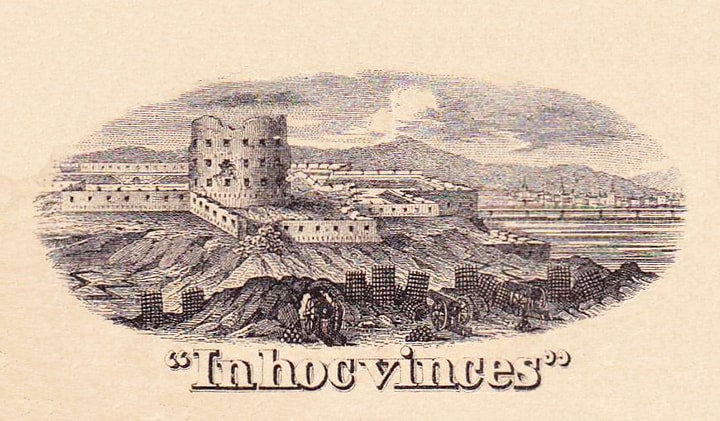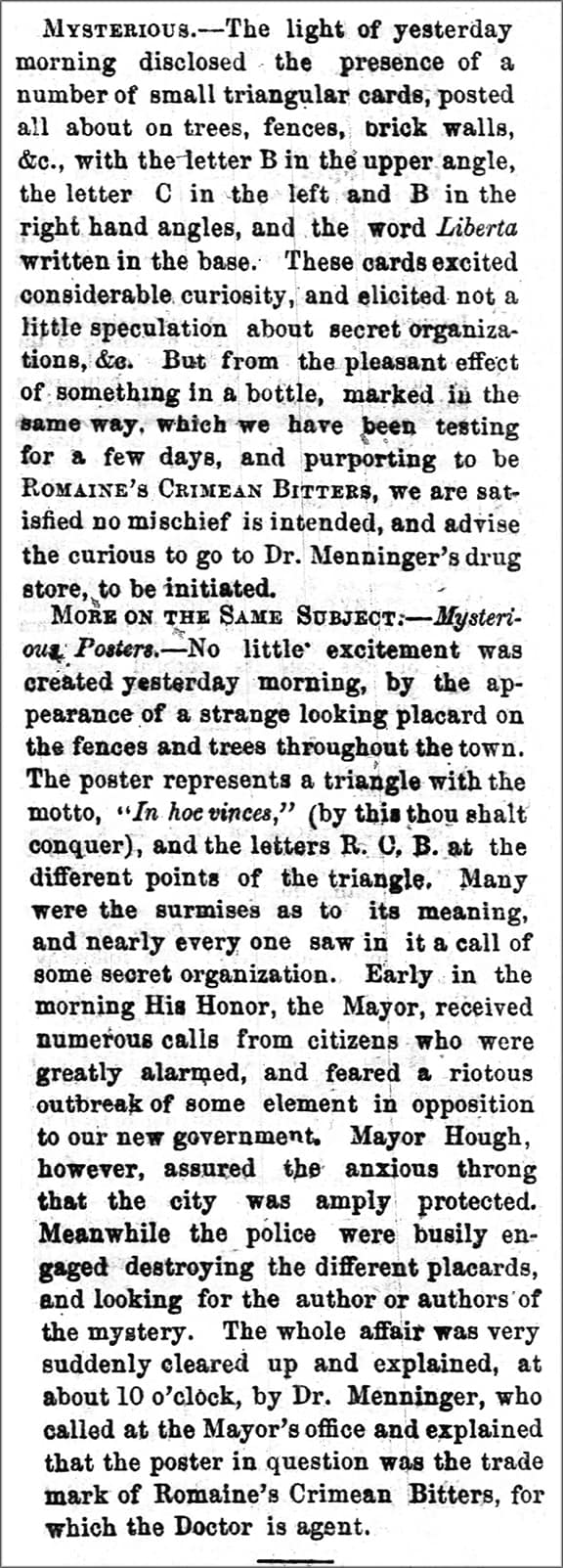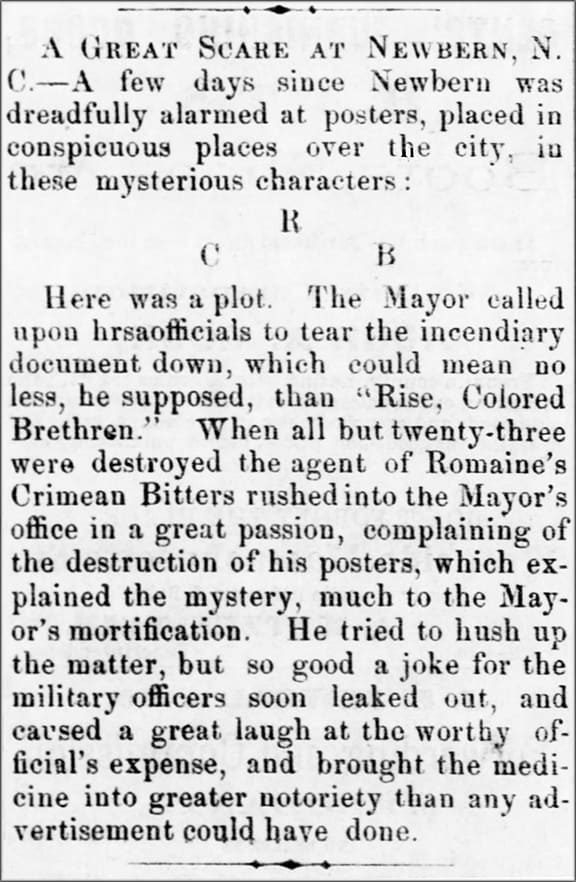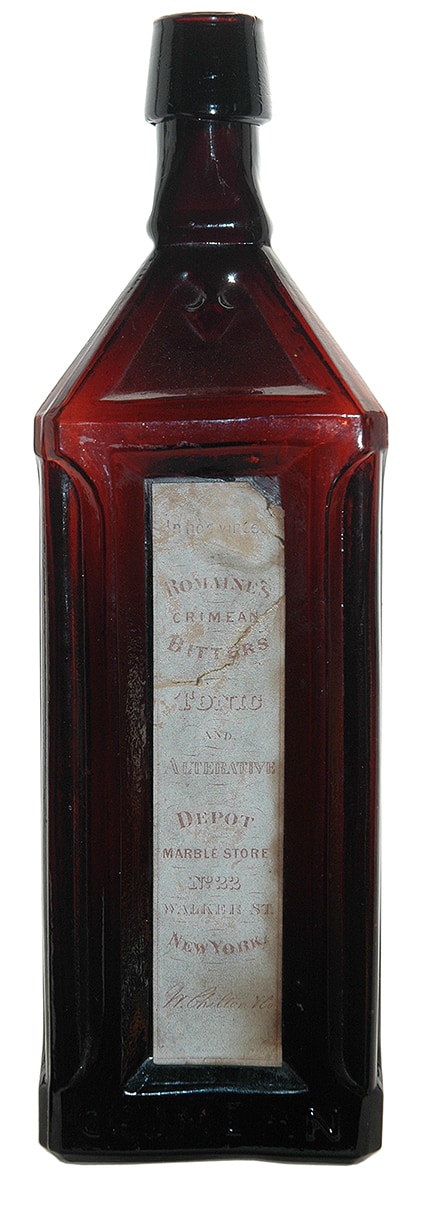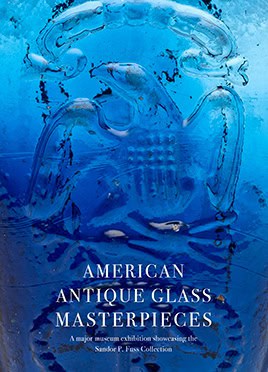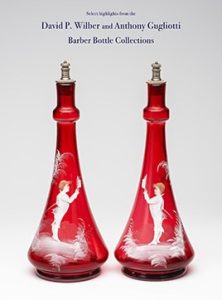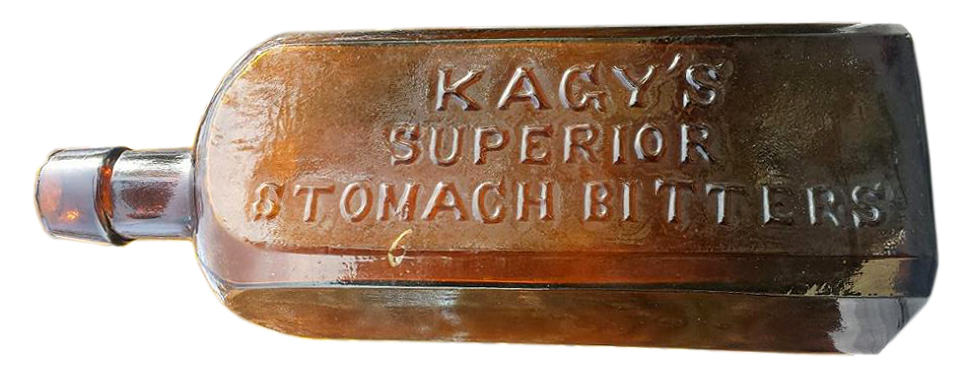
K.S.S.B = Kagy’s Superior Stomach Bitters – Ottawa, Illinois
15 November 2014 (R•070515)
 You know, I like bitters bottles. Collecting them, tracking them, researching, buying, selling, trading, winning, recording, photographing, writing, blogging etc. Kinda hooked. It has gotten to the point that it fills my life and consumes my time. When I am not thinking or doing something involving bitters, I get that “caged-in feel”. Like a bird in a cage, or one of my many dogs needing a run, I get restless. Imagine my surprise to be released from this caged-in feeling when I received this e-mail and related bottle pictures from Tim Henson in Missouri:
You know, I like bitters bottles. Collecting them, tracking them, researching, buying, selling, trading, winning, recording, photographing, writing, blogging etc. Kinda hooked. It has gotten to the point that it fills my life and consumes my time. When I am not thinking or doing something involving bitters, I get that “caged-in feel”. Like a bird in a cage, or one of my many dogs needing a run, I get restless. Imagine my surprise to be released from this caged-in feeling when I received this e-mail and related bottle pictures from Tim Henson in Missouri:
“I picked up this very rare Kagy’s Superior Stomach Bitters that is from Ottawa, Illinois. A pretty tough dude. A friend of mine was talking to Ken Farnsworth who put out the Illinois book (Bottled in Illinois: Embossed Bottles and Bottled Products of Early Illinois Merchants from Chicago to Cairo, 1840-1880 by Kenneth B. Farnsworth and John A. Walthall) and he told him that he only knew of one other himself. You just never know what might show up…..”
The Carlyn Ring and W.C. Ham listing in Bitters Bottles is as follows:

K3 KAGY’S SUPERIOR STOMACH BITTERS
KAGY’S / SUPERIOR / STOMACH BITTERS // f // f // f //
9 1/2 x 3 x 2 3/8 (7 1/4) 3/8
Square, Amber, LTC, Applied mouth, Very rare (should be extremely rare)
Dug in Earlville, Illinois
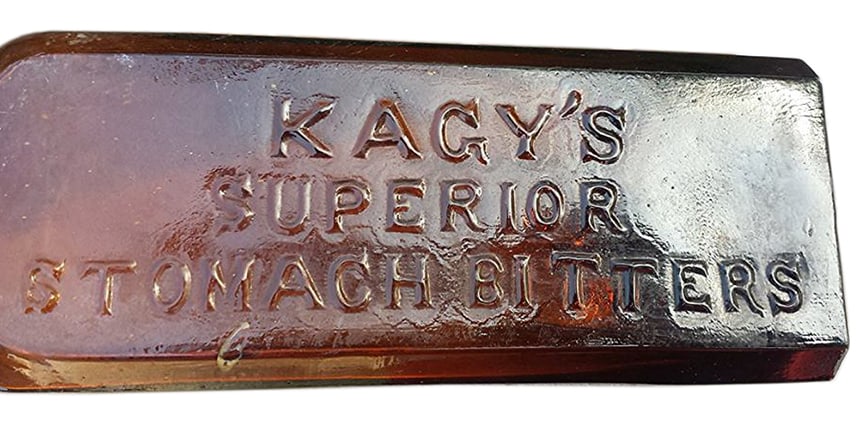
Embossed lettering on a Kagy’s Superior Stomach Bitters – Tim Henson Collection
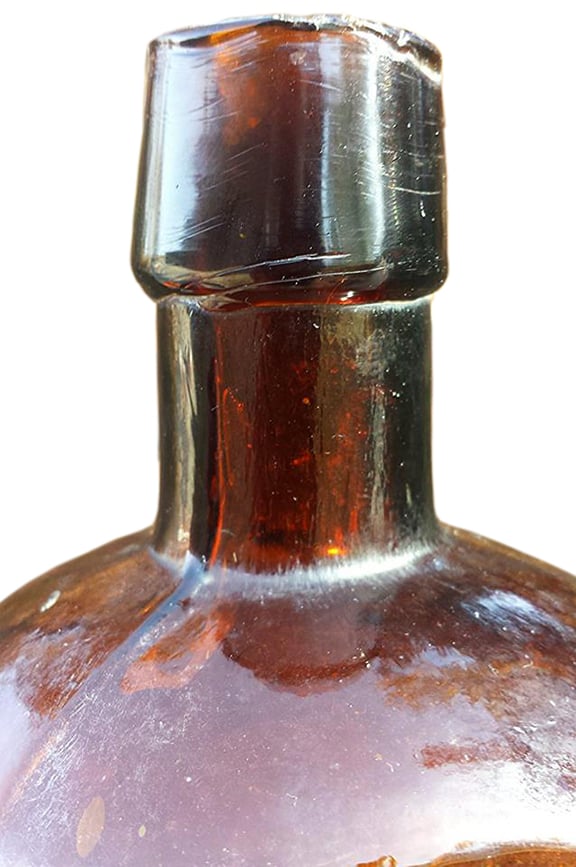
Applied top on a Kagy’s Superior Stomach Bitters – Tim Henson Collection

Tool marks on a Kagy’s Superior Stomach Bitters – Tim Henson Collection
Aaron Albert Kagy
The newspaper advertisement below, from the The Ottawa Free Trader, on 9 December 1871, lays it out for the K. S. S. B. – Kagy’s Superior Stomach Bitters. The notice says the product was put out by A. A. Kagy, Sole Manufacturer, Ottawa, Illinois.

Kagy’s Superior Stomach Bitters advertisement – The Ottawa Free Trader, 9 December 1871
 This would be Aaron Albert Kagy. Kagy’s Superior Stomach Bitters was a short-run bitters product that had its roots from a great Swiss family that came to America and settled in the Shenndoah Valley in Virginia. To understand this family, you must read a Kagy passage from The Pioneer Period and Pioneer People of Fairfield County, Ohio by C.M.L. Wiseman.
This would be Aaron Albert Kagy. Kagy’s Superior Stomach Bitters was a short-run bitters product that had its roots from a great Swiss family that came to America and settled in the Shenndoah Valley in Virginia. To understand this family, you must read a Kagy passage from The Pioneer Period and Pioneer People of Fairfield County, Ohio by C.M.L. Wiseman.
THE KAGY’S OF FAIRFIELD COUNTY
The Shenndoah Valley, of Virginia, was settled largely by Pennsylvania people, both English and German speaking people. They emigrated from Berks, Lancaster and York Counties, Pennsylvania. There were Mennonites, Dunkers and Primitive Baptists among-them. From the year 1806 to 1840, in almost every year many families came from that valley to Fairfield County. Samuel and Reverend John Wiseman, Abraham Winters, the Millers, Murphys, Ashbrooks, Beerys, Freeds and hundreds of other families all came from that splendid valley.
Of the many families referred to, none were larger or more highly respected than the Kagys. They were a hardy race, descended from hardy Swiss ancestors. But few of this large family now reside in Fairfield, for as the children grew to years of maturity, they married and either moved north to Seneca and Hancock Counties or to Marion, Cumberland and Effingham Counties, Illinois. This family produced many men of considerable prominence and ability, farmers, lawyers, doctors, ministers, teachers and merchants.
Honorable John Seitz, of Seneca County, was the son of Lewis Seitz, whose wife was a Kagy.
Rudolph Kagy, a native of Switzerland, came first to Pennsylvania. From there he moved to the valley of Virginia, and lie was the founder of the family that came to the county in 1833 and settled in Rushcreek.
Christian Kagy, son of Rudolph, the second, was born September 14, 1771, in Pennsylvania, and went to Virginia in 1781. He was married to Mary Bibler in 1796; they were the parents of ten children. He moved to Fairfield County in 1818 and died September 3, 1831.
Lewis B. Kagy once lived on the Goldthwait farm in Walnut township, and was the oldest son. He was born January 15, 1798. On October 9, 1823, he married Francina Ashbrook. He died May 12, 1872, in Illinois; his wife lived to be 93 years of age and died in Illinois, April 2y, 1897. They were the parents of seven children.
Abigail died in infancy.
Aaron Kagy was born April 2, 1826. He married Eliza Mauk, of Walnut township; they now reside at McCool Junction, Nebraska. For five years, beginning in 1850, Aaron Kagy was the largest and busiest stock buyer in Ohio; he drove his cattle in lots of 100 to Baltimore, Maryland. He failed in 1854 and involved many of his friends. His father and father-in-law endorsed for him and their farms were sold to pay his debts.
Mary Kagy, the oldest daughter, was born May 11, 1828. She married Jacob M. Walters and with him moved to the West; she now lives, a widow, in Webster City, Iowa.
Laura C. Kagy was born March 19, 1832. She married James T. Church, son of Isaac Church, of Lancaster, and now lives, a widow, in Chicago, Illinois.
John M. Kagy was born April 8, 1834; he married Mary P. Beckwith. He has lived in many parts of the West and now resides at Boseman, Montana.
Tunis A. was born April 26, 1830; he was drowned July 3, 1853, in the Emberras river, Illinois, where he was visiting.
Rebecca Kagy was born March 4, 1836. Her first husband was Benjamin Walters, brother of Jacob M., husband of Mary. Her second husband is Moab P. Trumbo, to whom she was married February 26, 1856. They reside on a fine farm near Ottawa, Illinois. The three daughters of Lewis B. Kagy are good women and exceptionally good looking. They were belles of Walnut township.
Aaron Albert Kagy was born on April 2, 1826 in Fairfield County, Ohio. As noted earlier, Kagy was the largest and busiest stock buyer in Ohio and he drove his cattle in lots of 100 to Baltimore. He failed in business in 1854 and had to be rescued by family members to pay his debts.
“he drove his cattle in lots of 100 to Baltimore, Maryland”
At 34 years old, Aaron A. Kagy resurfaces as a grocer in Mason, Effingham County, Illinois. The grocery business would play a big part in the Kagy family. In 1866, he is listed as a retail liquor dealer in a U.S. IRS Tax Assessment List. The business is called Walters & Kagy and they sold wholesale liquor in Ottawa, Illinois. His partner was his brother-in-law, Jacob M. Walters whose wife was his sister, Mary Kagy. The Bottled in Illinois book says that John M. Kagy was a partner with Jacob M. Walters. This may be true. I can not conform. In any event, both Kagy’s and Walters next have some misfortune in 1867 as they lose their grocery store and rectifying establishment to fire (see clipping below). Fortunately, the building was wholly covered by insurance.

Walters & Kagy grocery and rectifying lost by fire –The Pantagraph, Tuesday, April 16, 1867.
This is where it gets cloudy for a moment. In 1869-1870, Kagy & Trumbo is listed as grocers in Ottawa, Illinois with J.M. Kagy. This is according to Bottled in Illinois.
Ottawa, which is a bit southwest of Chicago, was the site of the first of the Lincoln-Douglas debates of 1858. During the Ottawa debate Stephen A. Douglas, leader of the Democratic Party, openly accused Abraham Lincoln of forming a secret bipartisan group of Congressmen to bring about the abolition of slavery.
In 1870, Aaron A. Kagy, age 44, lists “no business” and lives in Ottawa, La Salle, Illinois according to the United States Federal Census. John M. Kagy is listed as a farmer in the same census. Rebecca Kagy, Aaron’s and John’s youngest sister married Benjamin Walters, brother of Jacob M. Walters, who, as stated above was the husband of Mary. Her second husband is Moab P. Trumbo. So they are all or related to the grocery business in some respect or another.
Then comes the advertisement at the top of the post from 1871 for Kagy’s Superior Stomach Bitters. We must assume that this is Aaron’s baby. He was the older brother and his name is on the advertisement. It was probably sold in the Kagy grocery store. Aaron Cagy died in 1909.
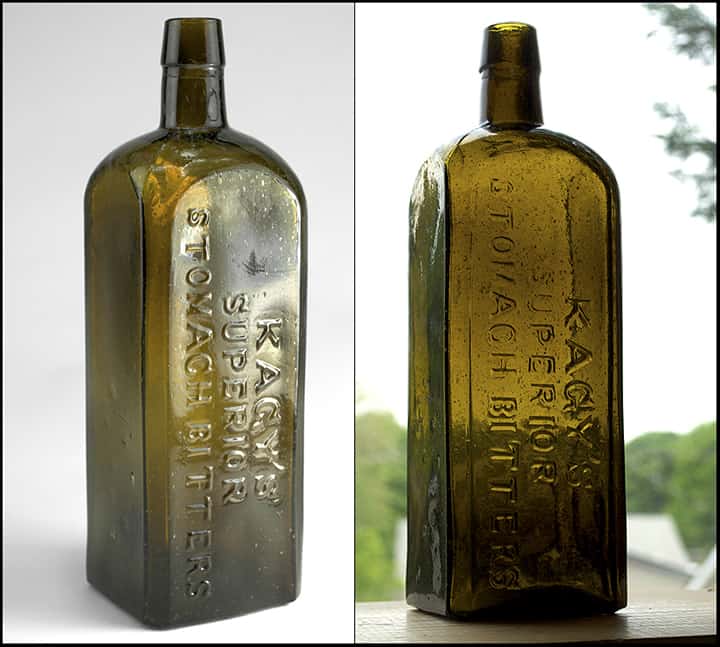
163. “KAGY’S / SUPERIOR / STOMACH BITTERS”, (Ring/Ham, K-3), American, ca. 1865 – 1875, yellowish olive amber, 9 1/2”h, smooth base, applied tapered collar mouth. A few minor scratches exist mostly near the base. Also two tiny surface bubbles have slight openings in the outer glass. Lightly cleaned to near perfect condition and loaded with air bubbles. Extremely rare mold and in an unlisted color! The last one we sold was in 1996! Jim Lyle Collection. – Glass Works Auctions 107
Select Listings:
1826: Aaron Albert Kagy born 02 April 1826 in Fairfield County, Ohio.
1834: John M. Kagy born in Fairfield, Ohio on 8 April 1834. Father was Lewis B. Kagy (1798-1872) who was born in Virginia and died in Ottawa. Mother was Francina Ashbrook (1804-1897) who was born in Hampshire County, Virginia (now West Virginia) and died in Ottawa.
1848: Aaron A. Kagy marriage to Mary Elizabeth Mauk on 07 Dec 1848 in Fairfield County, Ohio
1860: Aaron A. Kagy, age 34, grocer, Mason, Effingham, Illinois – United States Federal Census
1865: John M. Kagy marriage to Mary Piper Beckwith on 19 September 1865.
1866: A. A. Kagy, Retail Liquor Dealer – U.S. IRS Tax Assessment Report
1866-1867: Walters & Kagy, wholesale liquor, John Kagy and Jacob M. Walters (wife is Mary Kagy) – Ottawa City Directory (reported in Bottled in Illinois)
1867: Walters & Kagy grocery and rectifying lost by fire (see above) – The Pantagraph, Tuesday, April 16, 1867.
1869-1870: Kagy & Trumbo, Grocers, J. M. Kagy – Ottawa City Directory
1870: Aaron A. Kagy, age 44, no business, Ottawa, La Salle, Illinois – United States Federal Census
1870: John M. Kagy, farmer, wife Mary – United States Federal Census
1871: Kagy’s Superior Stomach Bitters advertisement (see above) – The Ottawa Free Trader, 9 December 1871
1880: Albert A. Kagy, age 54, laborer, Deer Park, La Salle, Illinois – United States Federal Census
1900: John M. Kagy, age 66, living in Monforton, Gallatin, Montana – United States Federal Census
1909: Aaron A. Kagy death.
1910: John M. Kagy, age 76, living in Billings Ward 2, Yellowstone, Montana – United States Federal Census
1914: John M. Cagy death in Billings, Yellowstone County, Montana on 17 January 1914.
![]() I don’t know if you noticed, but there was this incredible Dr. W. S. Love’s Vegetable Elixir – Baltimore in Glass Works Auctions The ‘Christmas Comes Early’ Catalog Auction #105 that closed last night. What a beauty. Great color, embossing, character and a rough open pontil. This bottle dates from around 1842 to 1844.
I don’t know if you noticed, but there was this incredible Dr. W. S. Love’s Vegetable Elixir – Baltimore in Glass Works Auctions The ‘Christmas Comes Early’ Catalog Auction #105 that closed last night. What a beauty. Great color, embossing, character and a rough open pontil. This bottle dates from around 1842 to 1844.